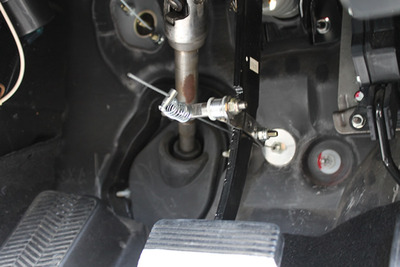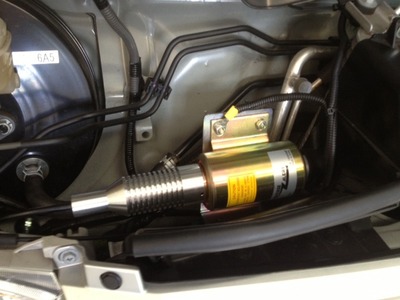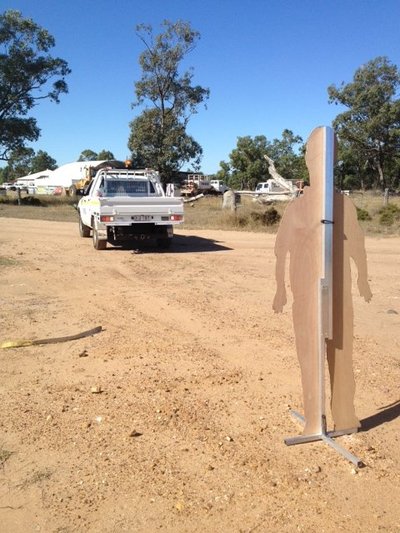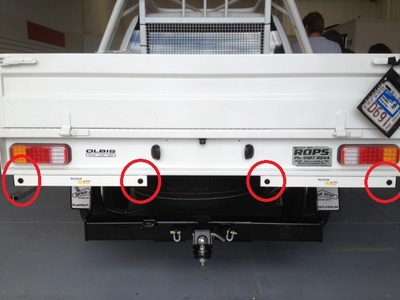Civil construction industry puts the brakes on for safety
Thursday, 30 January, 2014
Mobile machinery used in the construction industry can present a significant hazard to people, plant and equipment. One of the reasons for this is that operators of such machinery can have a restricted view when reversing. To assist the operators when reversing in close proximity to people or plant, an array of risk-orientated controls, ranging from cameras, proximity devices and beepers, has been used with mixed success.
Understanding the need for continuous improvement, Thiess recently partnered with Queensland company Surveillance Guard Co to trial an Australian-invented, aftermarket, automatic braking system for its fleet of light commercial vehicles and trucks used in the civil construction/mining environment.
Called Reverse Alert, the technology was originally designed as a child-safety initiative and has been trialled on more than 60 vehicles, including passenger vehicles, vans, taxis and road transportation trucks. The system comprises reversing camera, sensors and an automatic braking technology that automatically applies the brakes when the rear sensors detect a person/object.
Ultrasonic sensors are fitted to the rear of the vehicle. When reversing, if these sensors detect an object at 1.6 m a signal is then sent to a solenoid located at the front of the vehicle. The solenoid is attached to a flexible cable attached to a universal brake pedal clamp that is fitted on the brake pedal. When activated, the solenoid ‘pulls’ the brake pedal and the vehicle automatically stops.


As the product was not originally designed with the intention of being a WHS initiative, the Thiess trial was used to determine whether this approach to automatic braking could be considered suitable for reducing risks for conditions and vehicles used within industries such as the construction/mining industry.
The field trial was conducted by Thiess personnel in Queensland using light commercial vehicles and trucks under off-road terrain conditions. Running for four months, the trial concluded with the collation of data from the field reversing tests (reversing towards a human cut-out) and the operator’s verbal and written responses.

This feedback has resulted in some minor design modifications to make the technology suitable for this type of application. It was discovered that vehicles reversing on loose dirt surfaces may require more time to stop. Now when the sensors are installed, the user has the option to select the optimum range for the conditions under which the vehicle will be operated. For example, 1.6 m is considered optimum under normal road conditions, whereas under off-road conditions a longer range of up to 2.5 m range may be required.
Due to the increased size of trucks used on the trial, blinds spots were identified as another issue that needed to be addressed. As a result, the number of recommended sensors at the rear of the vehicle has been increased from four (which is considered suitable for use on a car) to a range between six and eight sensors for trucks (depending on the size).

While the system already included certain override features that allow the driver to park and reverse on extreme angles, the override functionality has also undergone some improvements to make it more user-friendly and easier to use under off-road conditions.
Overall, the trial produced promising results which indicate the technology does have potential in the construction/mining environments. According to the general manager of Reverse Alert Australia, Anthony Hoiberg, there has been significant interest in the technology and the company is now moving forward with the production of technology which is designed to suit industrial application.
Hoiberg says the company is currently installing the technology on Pantech trucks (road transportation) and tip trucks, and work is also underway on a design to suit hydrostatic braking vehicles such as forklifts and front-end loaders.
Rock lobster processor and exporter finds driver safety partner
A transport technology solutions provider has announced a new contract to enhance safety with...
Level crossing AI safety solution has merit
Among the merit recipients in the 2025 VIC iAwards was an edge AI solution designed to enhance...
Laser bird deterrent boosts tram depot safety
A Melbourne tram depot has reduced bird roosting by 90%, boosting safety through a fully...










